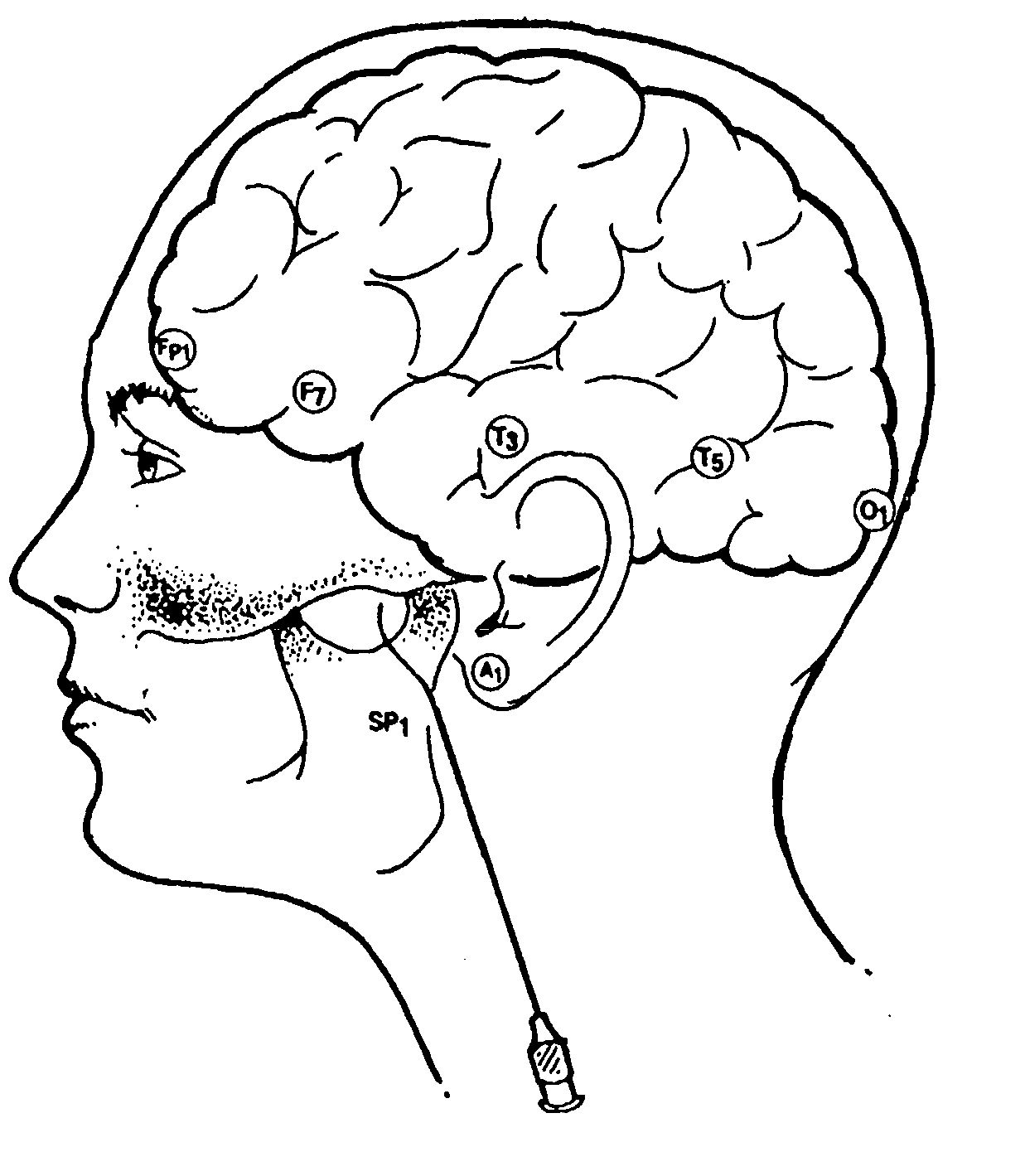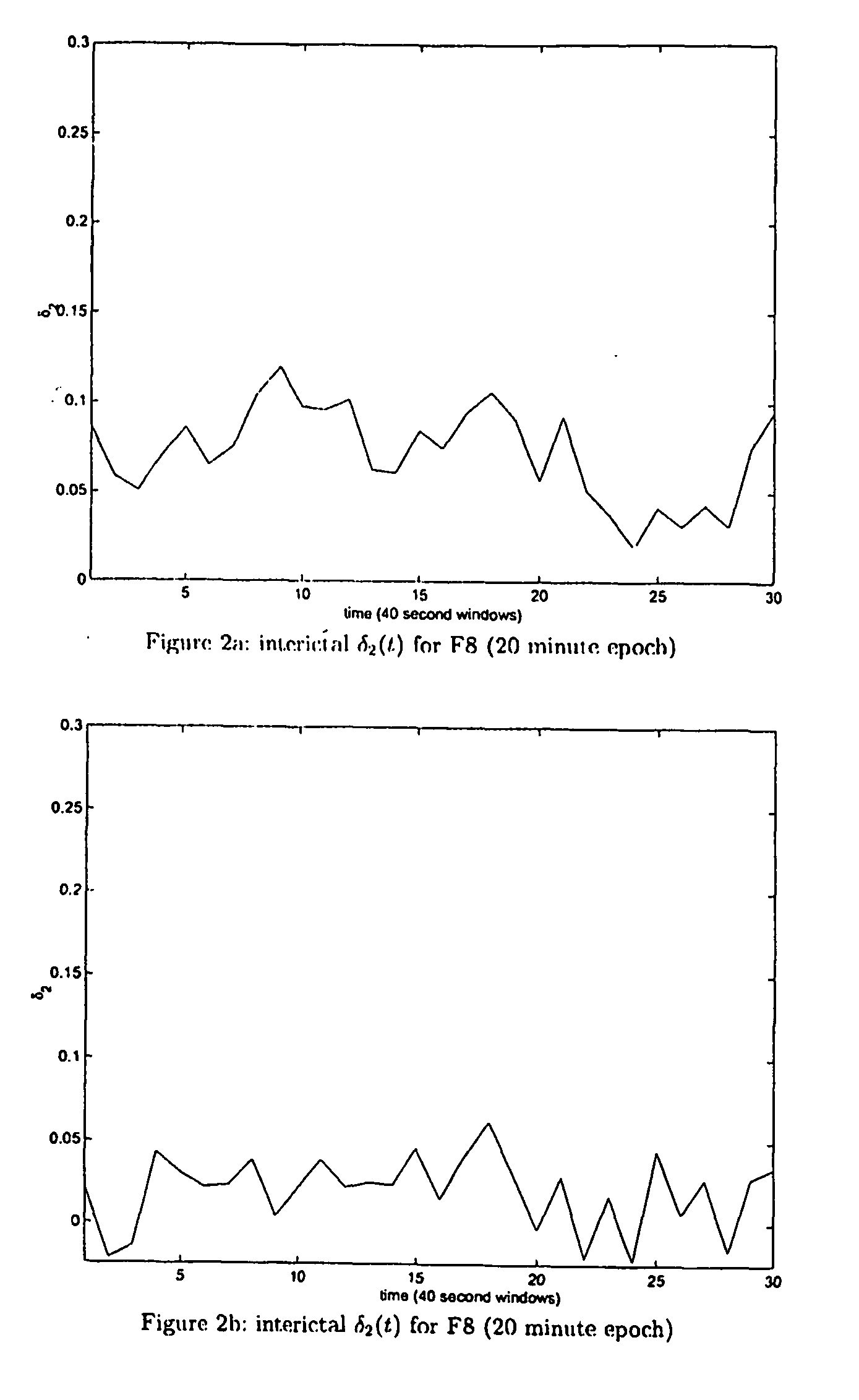Noninvasive nonlinear systems and methods for predicting seizure
a nonlinear system and nonlinear prediction technology, applied in the field of nonlinear prediction of seizure onset in noninvasive nonlinear systems, can solve the problems of unpredictability of seizure onset in an individual, difficult prediction and treatment of individual patients who will have seizure, and inability to understand why a particular patient will have a seizure, etc., to achieve reliable portable methods and reduce the effect of effects
- Summary
- Abstract
- Description
- Claims
- Application Information
AI Technical Summary
Benefits of technology
Problems solved by technology
Method used
Image
Examples
example 1
Subject Selection
[0112] This example describes the selection processes used for selecting patients suitable for studies used to validate the methods of the present invention. Patients were evaluated by epileptologists at Henry Ford Hospital in Detroit. Presurgical evaluations followed a standardized protocol (A. M. Valachovic et al., Language and its management in the surgical epilepsy patient in Medical Speech-Language Pathology, A. F. Johnson and B. H. Jacobson eds. Thieme, New York, N.Y., pp. 425-466 [1998]). In order to provide a homogenous group of patients, selection was limited to those afflicted with medically refractory mesiobasal temporal lobe epilepsy. Patients with this type of epilepsy are generally regarding as the most suitable candidates for epilepsy surgery.
[0113] The specific criteria for inclusion in our analysis are: 1) seizures had to be of unilateral mesiobasal temporal lobe origin, documented by history, and interictal and ictal EEG recordings; 2) patients h...
example 2
Electroencephalogram (EEG) Recordings
[0114] Patient EEG recordings were recorded on a 128-channnel BMSI / Nicolet 5000 System. (Nicolet Biomedical, Madison, Wis.). The band pass is 0.5 Hz to 100 Hz. The digital data is then transferred to a Linux workstation for conversion to ASCII text data and further analysis. An experienced epileptologist and a clinical neurophysiologist reviewed all EEG recordings. EEG recordings from the patients were visually inspected to identify epochs of interest for analysis. Epochs were divided into the following sets: 1) interictal, meaning at least 1 hour before and at least one hour after a seizure; 2) preictal, meaning within the hour preceding a seizure, and at least 1 hour following a seizure; and 3) ictal. Epochs were separated by behavioral state into: 1) wakefulness; 2) drowsiness; 3) stage 2 non-REM sleep; 3) slow wave sleep; and 4) REM sleep. Waking and sleeping EEG from normal age and sex-matched subjects were analyzed.
example 3
Study of MP and Different Behavior States
[0115] In the following example an experienced epileptologist reviewed the complete scalp EEG (26 channels) for 61 interictal and 33 preictal epochs, each 20 minutes long from 14 patients. The epileptologist categorized patient behavior during a plurality of 30 second interval of the epochs, and placed each interval into one of the following categories:
[0116] Awake, eyes open—AEO
[0117] Awake, eyes closed—AEC
[0118] Lightly drowsy—D1
[0119] Heavily drowsy—D2
[0120] Stage 2 NonREM sleep—S2
[0121] Stage 3 and 4 of NonREM sleep—S3 / 4
[0122] REM sleep—REM
[0123] From the set of 40 thirty-second intervals for a given epoch, a summary behavior score for that epoch was produced. If 32 or more of the 30 second intervals (80%) of a given epoch were in the same behavior state, then that 20 minute epoch was deemed primarily in that behavior state (e.g., AEO or D2). If 60-79% of an epoch was spent in one state, then that epoch was considered as predomin...
PUM
 Login to View More
Login to View More Abstract
Description
Claims
Application Information
 Login to View More
Login to View More - R&D
- Intellectual Property
- Life Sciences
- Materials
- Tech Scout
- Unparalleled Data Quality
- Higher Quality Content
- 60% Fewer Hallucinations
Browse by: Latest US Patents, China's latest patents, Technical Efficacy Thesaurus, Application Domain, Technology Topic, Popular Technical Reports.
© 2025 PatSnap. All rights reserved.Legal|Privacy policy|Modern Slavery Act Transparency Statement|Sitemap|About US| Contact US: help@patsnap.com



